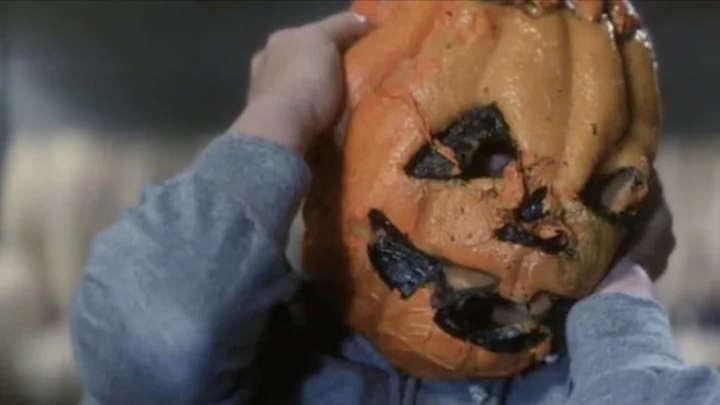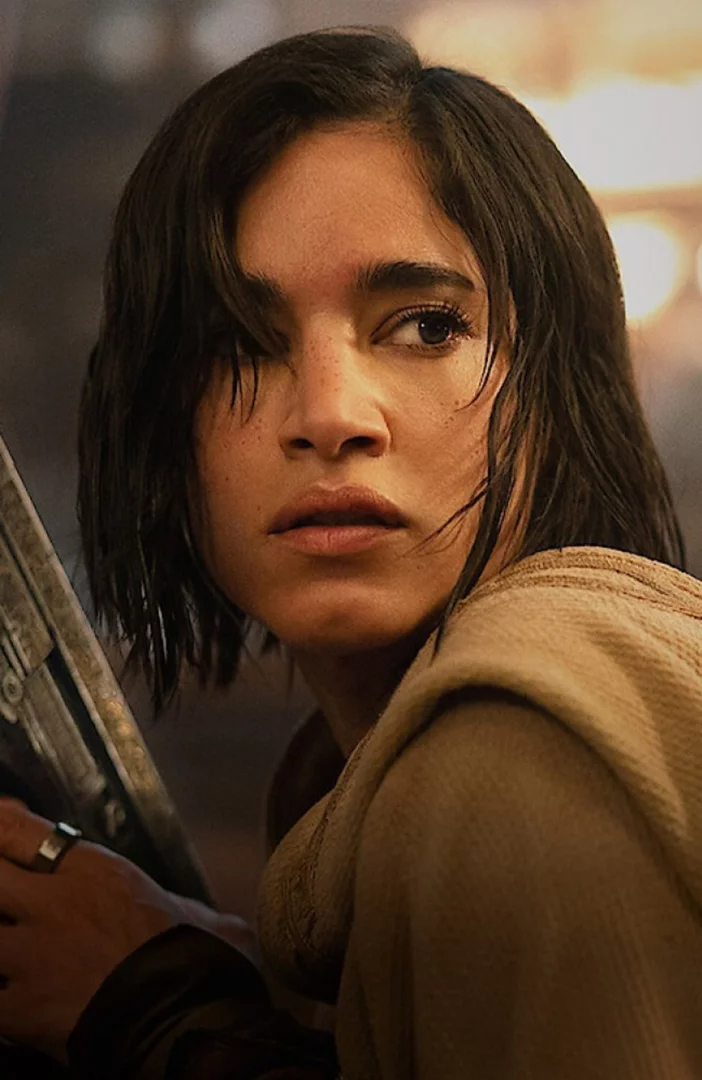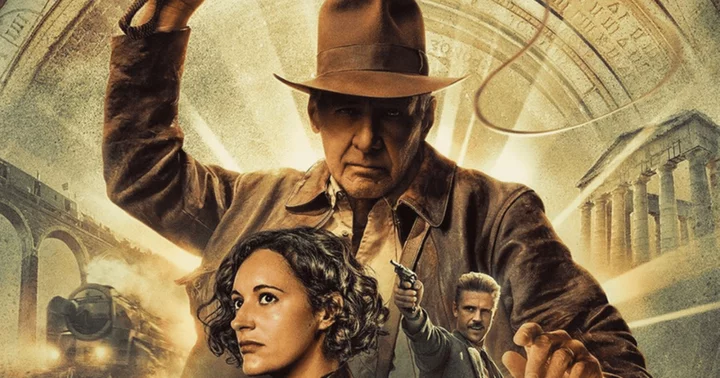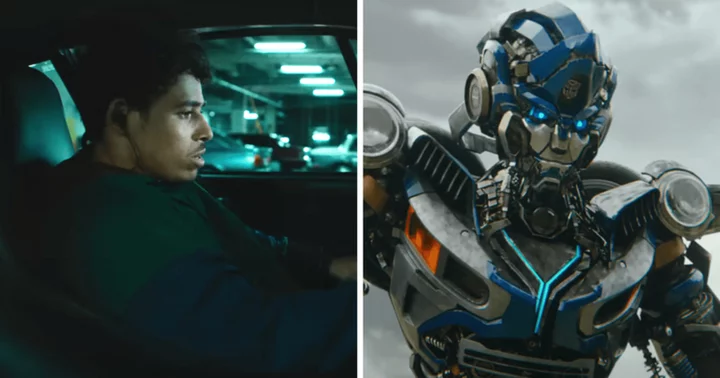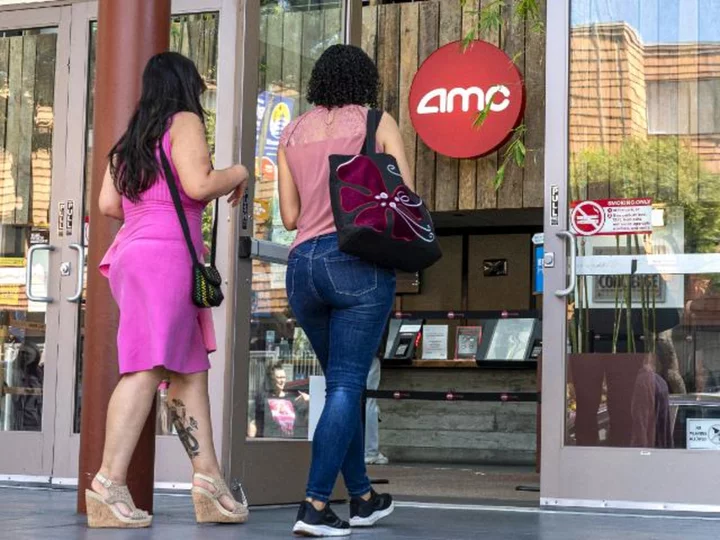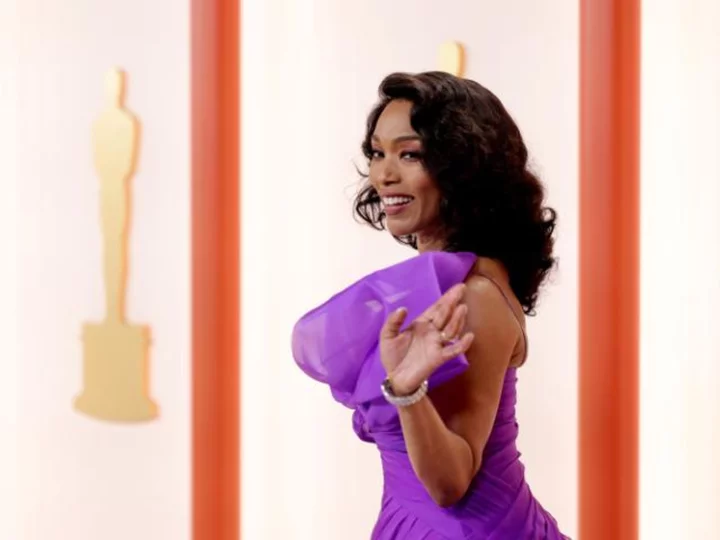In the annals of horror movie history, few sequels have been as reviled as Halloween III: Season of the Witch was when it first hit theaters back in 1982.
The sci-fi horror flick, which (spoiler!) centers around a toy company’s dastardly plot to sacrifice children on Halloween night, was a total departure from John Carpenter’s Halloween (1978), the surprise slice-’em-and-dice-’em hit that helped spawn the modern-day slasher genre. Season of the Witch doesn’t share too much in common with Halloween II, 1981’s hospital-set follow-up to the first movie, either.
The biggest gripe among critics and viewers alike was simple: Where the hell was Michael Myers? The white-masked Boogeyman is noticeably absent from Season of the Witch, as are Laurie Strode (Jamie Lee Curtis’s iconic final girl) and Dr. Sam Loomis (Donald Pleasence). And to add insult to injury, there’s hardly a butcher knife in sight.
But one generation’s trash is another generation’s trashy treasure. Similar to Carpenter’s The Thing—another divisive sci-fi horror flick from 1982 that was initially panned by critics—it would take a few decades for Season of the Witch to find its audience and gain the appreciation it probably always deserved. Below are more interesting facts about the controversial third installment in the Halloween franchise.
1. John Carpenter and Debra Hill only got involved because they didn’t have to focus on Michael Myers.
Carpenter and Halloween co-writer/producer Debra Hill were approached about a third film pretty quickly after the release of Halloween II. Reportedly, they started working on the project within days of the October 30, 1981 release of the slasher sequel, which Carpenter later called “an abomination” (but it earned about $25.5 million overall at the U.S. box office).
They agreed to do a third Halloween film, but only if they could take the storyline in a different direction and keep Michael Myers out of it—and Carpenter, too. The filmmaker agreed to stay on as a producer, but didn’t want to write the script or direct the film. That freed him up to keep focusing on The Thing, which was released in June 1982, but was still in principal photography when Halloween II came out in Fall 1981.
In the same 1984 interview where he called Halloween II “an abomination,” Carpenter also shed a little insight into his thinking at the time the films were made. “I let my producer’s side come out when they offered me the sequels to Halloween. They offered a nice sum of money. I also had a lot of hope for giving new directors a chance to make films as I had been given a chance with low-budget films,” he said.
2. Season of the Witch was intended to be part of an anthology.
“It’s a pod picture, not a knife picture,” Hill told The New York Times in 1982 when they asked her about the upcoming third installment of the Halloween series. But the road to making Season of the Witch wasn’t easy—in truth, it was pretty unprecedented.
Rather than trot out the same old butcher knife-wielding psychopath, Carpenter and Hill had the novel idea of transforming the franchise into a big-screen horror anthology series. According to director Tommy Lee Wallace, they imagined it would be in the same vein as Night Gallery or The Twilight Zone. But unlike those television shows—or big-screen anthologies like 1982’s Creepshow, which was broken up into five short segments—they wanted each new Halloween film to focus on a different story, which was very unusual for the time.
“See I thought, stupidly—this shows you how dumb I am—I thought that we were done with telling stories about Michael Myers and the guy in the mask. I thought there’s not much more to say,” Carpenter told The Hollywood Reporter in 2017. “So we thought we’d come up with a new story every year. We could call it Halloween, but it didn’t have to do anything with Michael Myers.”
3. Joe Dante was originally set to direct it.
Although Wallace would end up directing the film, he wasn’t the first candidate attached to the project. To bring Season of the Witch to the big screen, Carpenter and Hill initially recruited Joe Dante, who was starting to build up a name for himself with cult gems like 1979’s Rock ‘n’ Roll High School (which starred Halloween alum, P.J. Soles) and The Howling (1981).
Dante accepted, but dropped out just weeks before filming was set to start in April 1982, in order to direct a segment for 1983’s Twilight Zone: The Movie (he did the third story, based on the season 3 episode, “It’s a Good Life”).
To fill in, Hill and Carpenter brought Wallace on board. Carpenter and Wallace had been childhood friends, plus Wallace had previously worked as the art director and production designer for the original Halloween, and even appeared as Michael in the film’s legendary closet scene. He’d been offered the director gig for Halloween II, but had turned it down because he hated the script and wasn’t keen on its violence and gore. With Season of the Witch, Wallace made his directorial debut (he would later go on to direct the 1990 television adaptation of Stephen King’s It, which starred Tim Curry).
4. The original script was written by Quatermass creator Nigel Kneale.
Before Dante quit Season of the Witch, he reportedly recommended Nigel Kneale for the screenplay. The celebrated British screenwriter was best known for the BBC’s Quatermass series from the 1950s (which Carpenter was supposedly a big fan of) and was kicking around Hollywood at the time, working with director John Landis on a screenplay for a remake of Creature from the Black Lagoon, which never actually got made.
Kneale took a meeting with Dante and got sold on the project under the auspices that the story could be completely different from the earlier Halloween films. “Dante suggested that I [write] a treatment around the word Halloween. As I come from the Isle of Man and I remembered that Halloween was a big event, the start of the Celtic year and so forth, I worked out a story about the shops filling up with plastic masks and Halloween toys, as it’s really a big industry in America,” Kneale told Starburst Magazine in 1983.
It was also Kneale’s idea to weave witchcraft into the film, along with the sci-fi themes. “In the old days, in order for a witch to put a curse on you, she had to make personal contact. With the advent of the microchip, a spell could be transferred through the Halloween gifts,” he said, specifically through a “trademark stamp,” much like the medallion that sets off all the horror in the finished film.
5. Kneale later demanded that his name be taken out of the credits.
Kneale was given six weeks to pen the script, and by then, Dante was out and Wallace was in. While certain aspects of Kneale’s story—like an evil mask-maker using microchips to trigger mass chaos on Halloween—resonated, Wallace and Carpenter felt that other parts of it just wouldn’t connect with young American audiences.
“It was as if he was still writing for British television in the 1950s,” Wallace told Den of Geek in 2022. “I don’t mean that as an insult … His version was disturbing and there was a lot of interesting stuff but it was honestly more of a psychodrama than a pure horror movie.”
Producer Dino De Laurentiis agreed, and felt that the movie needed more gore and violence. Wallace and Carpenter ended up making significant revisions to the script, although Wallace approximated that about 60 percent of what Kneale originally envisioned made it into the picture.
Nevertheless, Kneale was reportedly outraged. “There was nothing in my baby that I could recognize and poor old Tommy Wallace was given the task of rewriting it. It was reduced to cardboard sets and a cast of six. So I took my name off of it,” he said.
6. The Silver Shamrock jingle was from an old nursery rhyme.
How many more days ‘til Halloween? You can start your own holiday countdown if you go by the famous jingle in the Silver Shamrock commercial, which gets played repeatedly throughout the movie.
But it’s not just an earworm because you keep hearing it. While most of the film’s music was original and composed by Carpenter alongside Alan Howarth (who also collaborated with the director on the scores for Escape from New York, They Live, and other flicks), the Silver Shamrock jingle is a little different because it’s mostly set to the tune of the classic nursery rhyme, “London Bridge Is Falling Down.”
According to Wallace, he was told he needed to “use something in the public domain or just make something up” for the jingle, because there was no money left to purchase the rights to anything else. “I knew ’London Bridge’ damn well was in the public domain. So no problem there.” He combined it with “The Spinning Song,” an old piano recital piece he remembered, and used his own voice for the vocals.
Once Wallace had done a series of recordings, he sped each of them up and combined it to create a ditty that he claimed “sounded like demented dwarves in a padded cell.” But he thought it worked out perfectly for the film, especially because it “obnoxiously gets in your head.”
7. Only one of those iconic Silver Shamrock masks was specially-made for the movie.
While not exactly MacGuffins—a.k.a., an event, character, or thing that keeps the plot of a story moving but otherwise has no real significance within the tale or for its audience—the Silver Shamrock Halloween masks are a key part of Season of the Witch, and big drivers behind the flick’s enduring pop culture appeal.
There were three masks in total: a lime-green witch wearing a hood; an eerie skull that glowed in the dark; and a bright orange pumpkin head. All of them are immediately distinctive, even by today’s standards, and were the work of special effects artist Don Post Jr., whose father, Don Sr., was dubbed the “Godfather of Halloween” for his role in helping create the latex mask industry back in the 1930s.
Both the witch and skull masks were modeled after Don Post Studio designs that were already in production; the skull model had reportedly been kicking around in stores since the late 1960s. The jack-o’-lantern mask was the only one created specifically for the movie, and was originally painted using Day-Glo.
“Because the masks are so significant to [Season of the Witch], they could become a cult item, with fans wanting to wear them when they go to see the movie,” Post told The New York Times in 1982. The deal worked out well for Post in other ways, too: Producers didn’t have much money to pay for props, so they agreed to share the profits on the merchandising in exchange for his work on the film.
8. You can still buy those masks online.
Ask a horror movie lover what they remember most about Halloween III: Season of the Witch and chances are, those iconic Silver Shamrock masks will come up (if the jingle doesn’t first). Far from being a bit of random memorabilia, those masks—which were sold for $25 back in 1982, or about $76 now—are integral to the film’s plot and are actually considered collector’s items these days.
Over at Trick or Treat Studios, you can find officially licensed versions of the skull, witch, and pumpkin masks. Prices start at about $50 and each comes with a Silver Shamrock medallion on it. While the medallion probably won’t—spoiler alert—shoot laser beams or cause your head to turn into a snake- and insect-ridden pile of mush like in the flick, you might want to avoid tinkering with it, just to be on the safe side.
9. A milk-bottling plant was used for exterior shots of the Silver Shamrock Novelties factory.
Unlike its predecessors, Season of the Witch is set in California, not in Haddonfield, Illinois. While most of the plot unfolds in the fictional town of Santa Mira, the shoot itself took place in Loleta, a small coastal town in the northern part of the state. The production crew used local landmarks—like the Familiar Foods milk-bottling plant, which was used for exterior shots of the Silver Shamrock Novelties factory in the film—throughout shooting. (They weren’t allowed to set off explosions or use smoke inside the milk-bottling plant, so for that, they used Post’s studio.)
10. There are multiple homages to Invasion of the Body Snatchers in the film.
Season of the Witch famously breaks away from the slice-and-dice routine of the earlier Halloween flicks, taking the story into more of a sci-fi-meets-paganism direction. But one of the major complaints that critics would later have with the film is that they felt it was too derivative of earlier sci-fi hits, specifically the 1956 version of Invasion of the Body Snatchers. Spun another way, though, and what qualifies as derivative in one critic’s eyes might look an awful lot like an homage to another.
There’s no denying that the ’50s-era Invasion of the Body Snatchers was a big influence on the film. It was Hill’s idea to name the town Santa Mira, which was also the name of the fictional town in Body Snatchers. The somewhat ambiguous, nihilistic ending of Season of the Witch is an ode to Don Siegel’s classic, too, which originally ended on a similarly cryptic note.
“It was the right ending for the movie and also my own personal tribute to Don Siegel’s Invasion of the Body Snatchers,” Wallace told Den of Geek. While the studio hated Wallace’s ending—and even enlisted Carpenter at one point to convince him to change it—he refused and still has no qualms about it. “I thought it made it a true horror movie,” he said.
11. Stacey Nelkin was cast at the last minute (and initially wasn’t interested).
A number of Carpenter’s regulars appear in Season of the Witch. Tom Atkins, who stars as Dr. Dan Challis, had previously been in The Fog (1980) and Escape from New York (1981). But there were some newcomers within the cast, most notably Stacey Nelkin, who co-stars as Ellie Grimbridge, a young woman desperate to uncover the truth about her father’s mysterious death.
Nelkin mostly did television work before appearing in the flick. She found out about the part from a makeup artist who was working on the set, and who revealed that they were having trouble casting for it.
“They were getting really close to shooting and they could not find the lead girl, and he kept saying, ‘Stacey, would you be interested?’ I really was not. I was doing a lot of comedies at the time, and other things,” Nelkin said in a 2015 interview with CrypticRock. But eventually she read the script and reportedly “fell in love with the character.” Within about a week of getting the part, she started filming, and the rest is ‘80s horror movie history.
12. Jamie Lee Curtis did uncredited voice work.
It’s impossible to talk about the Halloween franchise and not mention Jamie Lee Curtis. The future Oscar winner was just 20 years old when she made her film debut in the original Halloween. By the time Season of the Witch was in production about four years later, she had several other horror movies under her belt, including The Fog, Terror Train, and Prom Night (all of which were released in 1980), and of course, 1981’s Halloween II (which earned her a $100,000 payday, worth about $355,000 today).
But despite surviving her hospital battle against Michael in the second film, Laurie Strode—the final girl Curtis portrays in the series—doesn’t show up in Season of the Witch. This was partially due to the overall direction of the film, which doesn’t follow the storyline of its predecessors. Another possible reason? At the time, Curtis was trying to avoid being typecast (a fate which she successfully avoided, thanks to 1983’s Trading Places).
Nevertheless, Curtis does make an uncredited cameo in Season of the Witch. You can hear her voice in a couple of scenes, as both a telephone operator and the Santa Mira curfew announcer. She wouldn’t officially return to the franchise as Laurie until 1998, with Halloween H20, and she’s subsequently appeared in every new Halloween film since, except for Rob Zombie’s 2007 remake of the original and his 2009 follow-up (also dubbed Halloween II).
13. Tommy Lee Wallace did uncredited voice work, too.
Curtis wasn’t the only performer who technically went uncredited in Season of the Witch. The announcer speaking over those catchy Silver Shamrock commercials—and the one who is luring children to slip on their masks ahead of the “Big Giveaway” on Halloween night—was none other than the film’s director, Tommy Lee Wallace.
14. Dan O’Herlihy wasn’t a fan of the finished film.
To summon up the creeping malevolence of Conal Cochran, the film’s diabolical, Samhain-worshiping antagonist, producers cast veteran actor Dan O’Herlihy, who had previously earned an Oscar nomination for his lead role in Luis Buñuel’s 1954 adaptation of Robinson Crusoe.
O’Herlihy, who was born in County Wexford, Ireland, reportedly appreciated that he got to use his accent in the film. “Whenever I use a Cork accent, I’m having a good time, and I used a Cork accent in [Halloween III],” he said in an interview. He wasn’t so keen on the finished product, however, claiming that while he “thoroughly enjoyed the role … I didn’t think it was much of a picture, no.”
15. Season of the Witch was the lowest-grossing Halloween movie (at the time).
Season of the Witch hit theaters on October 22, 1982, just in time for the Halloween season. Despite the perfect timing, it didn’t scare up much of an audience at the box office. It earned approximately $6.3 million during its opening weekend—a marked decline from the $7.4 million that Halloween II raked in just one year earlier for its own opening weekend.
The box office returns for Season of the Witch didn’t drastically improve after opening weekend; the film ultimately took in about $14.4 million, which made it the worst-performing flick in the Halloween franchise until Halloween V: The Revenge of Michael Myers (1989), which only earned roughly $11.6 million.
While the series has since expanded (there are technically 13 Halloween movies now), The Revenge of Michael Myers and Season of the Witch remain the two lowest-grossing films in the 45-year-old franchise. The film that bridges the gap between them—1988’s Halloween IV: The Return of Michael Myers—marked the reappearance of the iconic killer (as you can probably gauge from the subtitle), and it netted about $6.8 million for opening weekend, and $17.7 million overall during its theatrical run.
16. Critics panned it, but it’s since become a cult classic.
Although Season of the Witch has become a cult classic in recent years, film critics of its era certainly didn’t celebrate it. In fact, most of them outright panned it. Roger Ebert gave the flick 1.5 stars and described it as a “low-rent thriller from the first frame,” while The New York Times’s Vincent Canby blasted the film for its “comically horrible special effects” and noted that it “manages the not easy feat of being anti-children, anti-capitalism, anti-television, and anti-Irish all at the same time.”
According to Wallace, the flick’s poor reception might have had more to do with what wasn’t in it, rather than what actually was. “An awful lot of people were disappointed, even outraged, that Michael Myers didn’t show up and that there was no knife and no Jamie Lee Curtis,” he told Den of Geek. Nevertheless, he was “crushed” by its hazing: “I was demoralized. I internalized it and felt like maybe I was a failure. It was a real millstone to have the name Halloween in the title ... But Season of the Witch would simply not have gotten made without it.”
Contemporary reviewers have been much kinder to Season of the Witch: Jim Knipfel from Den of Geek referred to it as a “tight little sci-fi horror mystery conspiracy tale,” and Benjamin H. Smith of Decider declared that it’s a “better movie than it gets credit for and carries all the hallmarks of a classic ’80s sci-fi horror thriller.” For Wallace in particular, that critical reappraisal turned out to be a “real salve for an old wound,” and something that has “really helped a lot” in terms of his own perception of the film.
17. There was a very graphic, bestselling novelization.
Movie novelizations—essentially a film put into book format—were big business back in the 1970s and ‘80s. From Star Wars to The Terminator, virtually every sci-fi flick of the era had one as a tie-in with its theatrical run, and Season of the Witch was no exception.
Published by Jove Books in 1982, the Season of the Witch novelization was written by acclaimed fantasy-horror writer Dennis Etchison under the pseudonym Jack Martin (he also did the novelization for Halloween II). While the film didn’t score well with critics or audiences, the novelization for Season of Witch became a bestseller. It was also more graphic about certain plot points, like the fate of Little Buddy (played by Brad Schacter in the film) and his parents, which some readers felt added more context and gravity to the story. Paperback versions of it are pretty valuable these days and go for between $80 to $124 used on Amazon.
18. Season of the Witch is a standalone film—but it’s still part of the franchise’s overall mythology.
While those Silver Shamrock masks aren’t a focal point in any of the subsequent Halloween films, they still make an appearance. You can spot all three in Halloween (2018), and again in 2021’s Halloween Kills.
Some fans believe that there may be a larger, more meta connection between the film and the rest of the franchise, too. At one point in Season of the Witch, there’s actually a commercial playing in a bar for the original Halloween film, which has led some to suspect that the first two films are just a fictional part of the “real world” captured in the third film.
Another theory focuses on Cochran’s cult, and speculates that Season of the Witch might not have been the end of the road for them after all. Another group of Druids—known as the Cult of Thorn—gets up to no good around October 31 in 1995’s Halloween: The Curse of Michael Myers (starring Paul Rudd), leading certain fans to believe that they might all be part of the same crew.
The smoking gun, according to this theory, is the character of Mrs. Blankenship. In Season of the Witch, Cochran takes a call from a woman named Mrs. Blankenship, but she’s never seen on the screen. In The Curse of Michael Myers, another Mrs. Blankenship (Janice Knickrehm)—or perhaps the same one—runs a boarding house across the street from the old Myers residence; it’s later revealed that she also babysat Michael when he was a boy, and that she’s a member of the cabalistic Cult of Thorn.
None of these theories has ever been officially confirmed or denied, but they add some fun twists to what is otherwise regarded as a standalone entry within the greater universe of the Halloween franchise.
This article was originally published on www.mentalfloss.com as 18 Surprising Facts About ‘Halloween III: Season of the Witch’.

